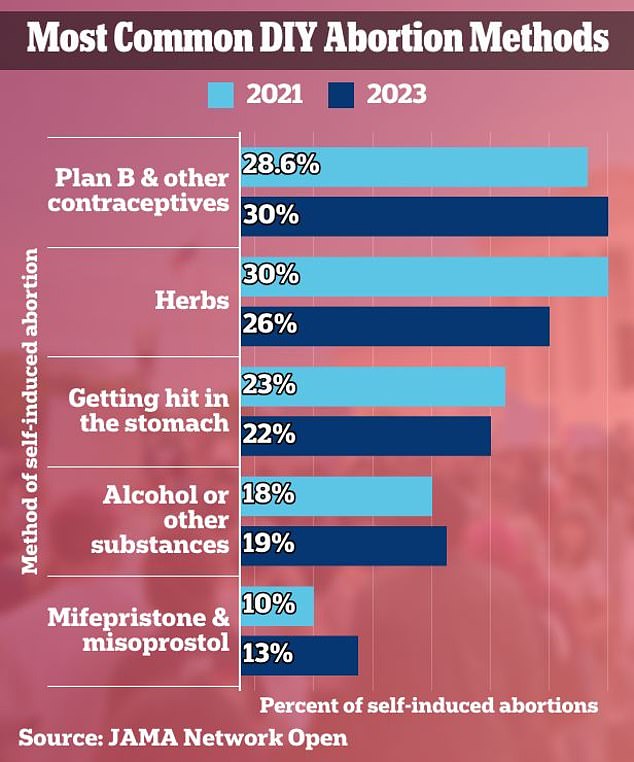Home abortions rose after Roe v Wade was overturned, study suggests.
Researchers found that about 2.1 percent of all abortions in the United States in 2021 were performed without medical supervision.
The results showed that figure rose to 3.4 percent in 2023, a jump of 40 percent, when abortion protections were removed at the federal level.
The most common methods cited were Plan B emergency contraception, herbs such as mugwort, getting punched in the stomach and drinking alcohol.
The team cautioned, however, that while the increase is significant, self-managed abortions are still rare and the overall number remains low.
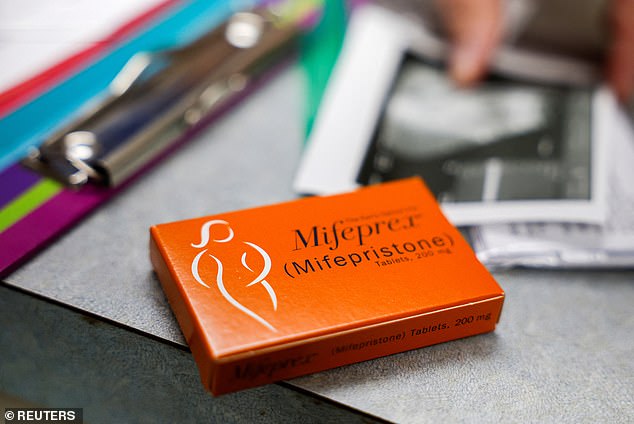
Medication abortions such as mifepristone and Plan B were a leading cause of the rise in self-managed abortions, researchers at the University of California, San Francisco, found.
The findings come as more than a dozen states have restricted abortions or even banned them entirely following the Supreme Court’s decision to overturn Roe v Wade in 2022.
The team wrote: “These findings suggest an increased prevalence of self-managed abortion in the US; self-managed abortion should continue to be carefully monitored as barriers to facility-based care expand.”
One important caveat the team noted is that when they filtered out women who had these abortions without a confirmed pregnancy test, the differences between 2021 and 2023 were not significant.
The study was published Tuesday in JAMA Network Open.
Researchers at the University of California, San Francisco surveyed more than 14,000 women at different points between December 2021 and July 2023, asking them whether they had ever had a “self-managed” abortion, or one without medical assistance.
Women were asked two questions. The first was whether they had “ever taken or done anything on their own, without medical assistance, to try to end a pregnancy.”
If they answered “no” or skipped the question, they were presented with a list of self-abortion methods and asked to select any they had ever used “to try to end a pregnancy on their own, without medical assistance.”
If women answered “yes” to any of the questions, they were asked how many times they performed their own abortions, how old they were, whether they took a pregnancy test, why they suspected they were pregnant, where they lived, whether the method worked, whether there were complications, and whether they sought medical help afterward.
The team also asked why women performed their own abortions.
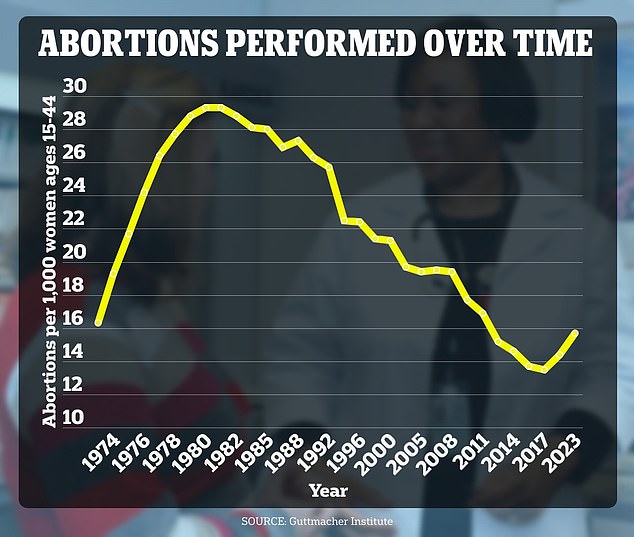
Other research has shown increases. A report by the reproductive health firm Guttmacher Institute showed there were 1 million abortions in the U.S. in 2023, the equivalent of 16 per 1,000 women. That was up 10 percent from 14.4 per 1,000 in 2020 and the highest since 2014, when the rate was 14.6 per 1,000.
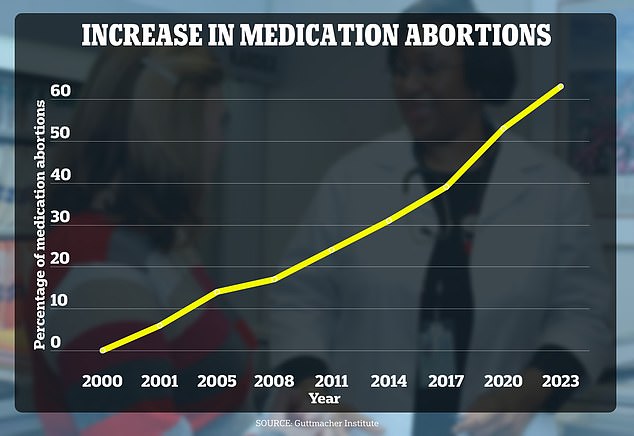
Nearly two-thirds of abortions in 2023 were due to drugs like mifepristone, Guttmacher Institute report finds
Emergency contraception was the most popular method (30 percent), followed by herbs (26 percent), stomach punches (21.6 percent) and alcohol or other substances (18.6 percent).
Certain herbs such as pennyroyal, mugwort, and high doses of vitamin C have been shown to induce abortion, but have also been linked to liver damage.
Additionally, Dr. Ryan Marino, medical director of toxicology and addictions at University Hospitals of Cleveland, said: NBC News That pennyroyal is especially dangerous.
“Even in cases where people don’t have symptoms or end up hospitalized, it’s associated with a long-term risk of cancer,” he said. “It’s a known human carcinogen and every time those molecules are in the body, they’re doing something bad there.”
Meanwhile, the number of women using the abortion pill mifepristone rose by 40 percent between 2021 and 2023, which could be due to it becoming widely available online and in pharmacies.
This method involves the administration of two drugs over one or two days. The first, mifepristone, blocks the hormone progesterone, which maintains pregnancy. The second, misoprostol, induces uterine contractions.
In March, mifepristone hit the shelves of pharmacies such as CVS and Walgreen’s in five U.S. states: New York, Pennsylvania, Massachusetts, California and Illinois.
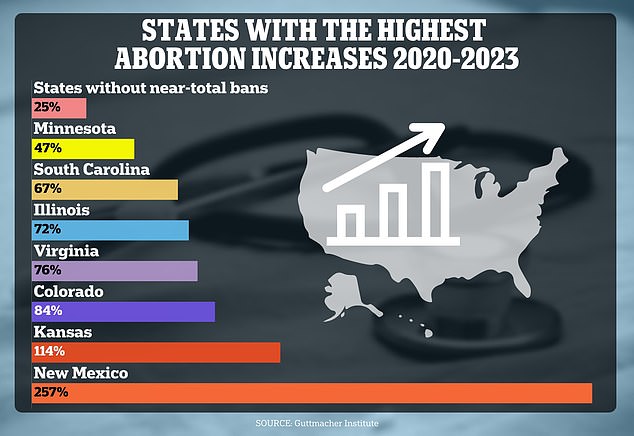
New Mexico has seen the biggest increase in abortions, which could be because it borders Arizona and Texas, which have restrictions.
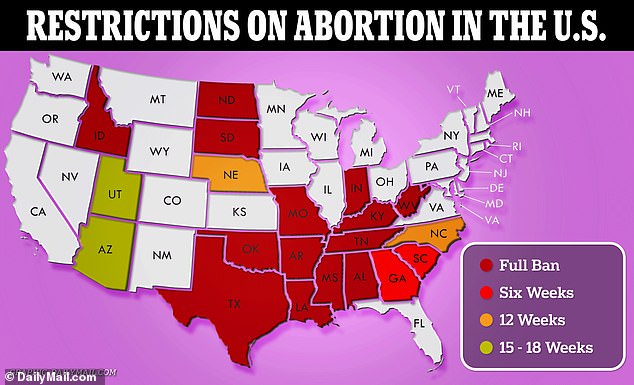
The map above shows states where abortion is restricted in some way or banned entirely.
The proportion of self-managed abortions was highest among Black women (5.1 percent in 2023) and lowest among white women (2.7 percent).
In 2021 and 2023, the average age of a woman’s first self-managed abortion was approximately 21 years. One in five women reported having performed more than one self-managed abortion.
The findings are consistent with other recent research, including a March report from reproductive health firm Guttmacher Institute, which showed abortions have reached their highest level since 2014.
The study had several limitations. For example, some women may not have reported their abortions for fear of repercussions, as the procedure is banned in several states.
Furthermore, self-managed abortions are rare, so the sample size was small.


